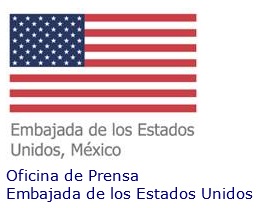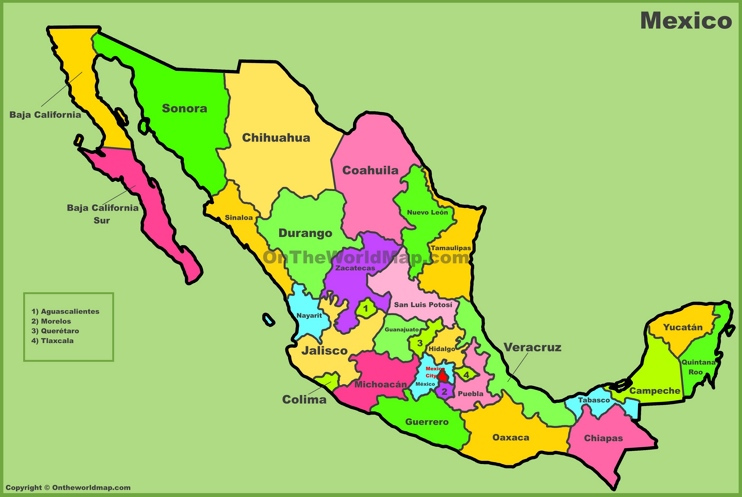The U.S. Department of State conducted the annual update of the Travel Advisory for Mexico on November 15, 2018. This is a routine update that replaces the country-wide Travel Advisory issued on Jan 10, 2018, to include subsequent revisions made since then to specific consular districts.
Under the new system launched January 10, 2018, every country has a Travel Advisory, providing levels of advice ranging from 1 to 4:
- Level 1 – Exercise Normal Precautions: This is the lowest advisory level for safety and security risk. There is some risk in any international travel. Conditions in other countries may differ from those in the United States and may change at any time.
- Level 2 – Exercise Increased Caution: Be aware of heightened risks to safety and security. The Department of State provides additional advice for travelers in these areas in the Travel Advisory. Conditions in any country may change at any time.
- Level 3 – Reconsider Travel: Avoid travel due to serious risks to safety and security. The Department of State provides additional advice for travelers in these areas in the Travel Advisory. Conditions in any country may change at any time.
- Level 4 – Do Not Travel: This is the highest advisory level due to greater likelihood of life-threatening risks. During an emergency, the U.S. government may have very limited ability to provide assistance. The Department of State advises that U.S. citizens not travel to the country or leave as soon as it is safe to do so. The Department of State provides additional advice for travelers in these areas in the Travel Advisory. Conditions in any country may change at any time.
The Department of State reviews Travel Advisories on a regular basis to ensure they remain valid and up to date. Below is more information about Travel Advisories and what has been updated in the current version.
Background on Travel Advisories
- The United States issues Travel Advisories for many countries in the world.
- The Travel Advisory for Mexico is uniquely detailed and includes state-by-state assessments that provide information on security conditions in specific regions of Mexico.
- Travel Advisories do not reflect the nature of our bilateral relations with a country. They are part of our commitment to inform and protect U.S. citizens traveling and residing abroad.
- In addition to the Travel Advisory for Mexico, U.S. citizens can also find other important travel information for Mexico by visiting https://travel.state.gov.
- We also strongly recommend that U.S. citizens, whenever they travel abroad, enroll in the State Department’s Smart Traveler Enrollment Program (STEP) at https://step.state.gov. By doing so, U.S. citizens can receive the latest information about conditions in their destination country and make it easier for the nearest embassy or consulate to contact them in case of an emergency.
Background on the U.S.-Mexico Relationship
- Mexico is one of the United States’ closest and most valued partners. The spirit of cooperation between our countries reflects deep institutional, economic, personal, and cultural bonds.
- Our countries share a 2,000-mile border, with 48 official border crossing points, which handle several hundred thousand crossings daily. Mexico is our third largest trading partner (after Canada and China) and second largest export market for U.S. goods. Two-way goods and services trade totaled $623 billion in 2017, and directly and indirectly supported five million U.S. jobs.
- Our vital relationship involves every U.S. Cabinet agency, and we are more committed than ever to closely collaborating as partners to achieve security and prosperity for citizens of both our countries.
U.S. Tourism in Mexico
- Millions of U.S. citizens safely visit Mexico each year for study, tourism, and business, including hundreds of thousands who cross the border every day.
- The U.S. government actively encourages U.S. commerce, trade, and investment with Mexico as well as tourism and educational and cultural exchanges.
- The Mexican government dedicates substantial resources to protect visitors to major tourist destinations.
What is new in this Travel Advisory?
- We strongly encourage U.S. citizens to read the Travel Warning in its entirety. In addition to describing security conditions in each state, the current update reflects the latest U.S. government restrictions on its personnel for travel, to include changes in Chihuahua, Coahuila, Durango, Morelos, Nayarit, and Oaxaca. The overall travel advisory level for Mexico and the state-specific advisory levels remain unchanged.
Full Text of Travel Advisory:


